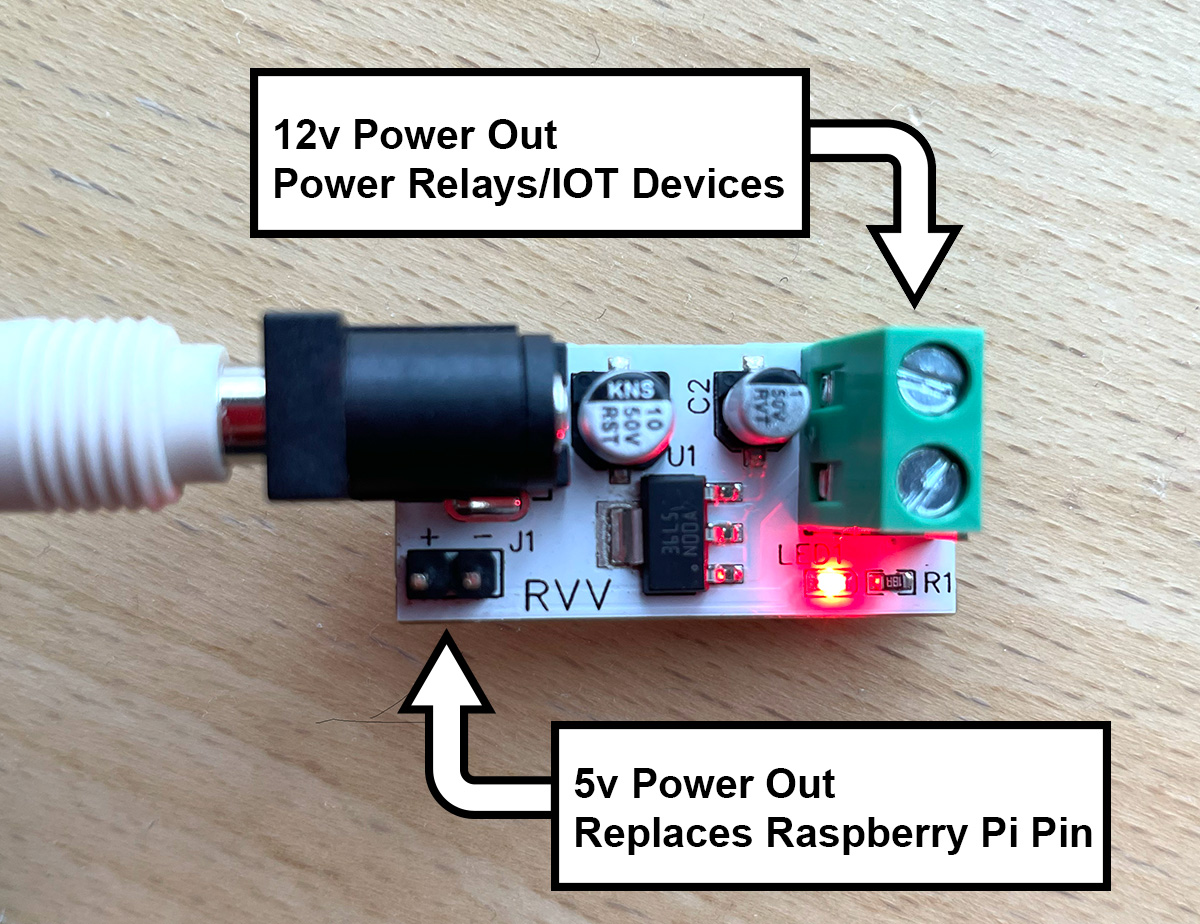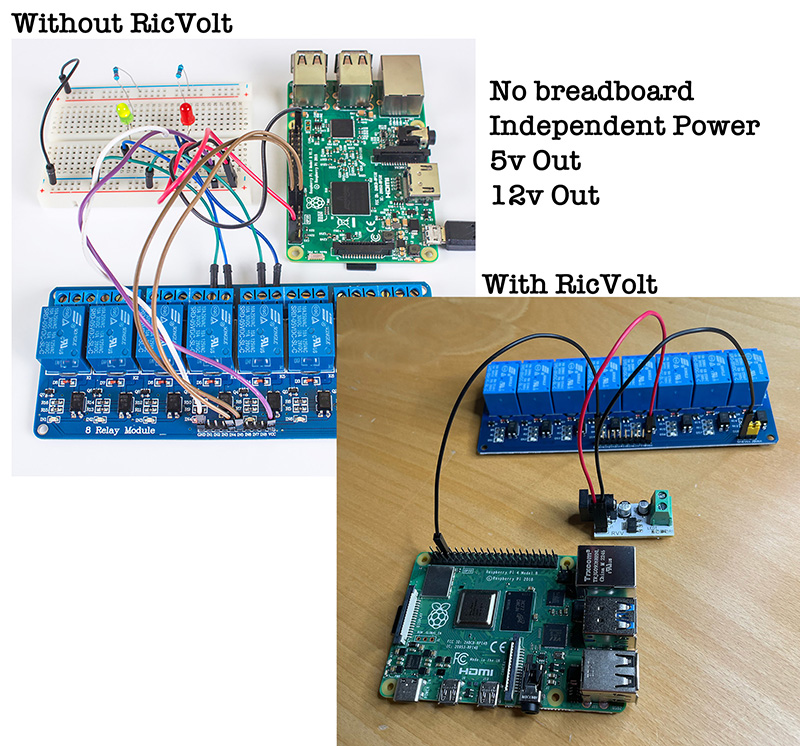
RicVolt 12 Volt & 5 Volt Power Splitter for Raspberry Pi and Arduino
The RicVolt provides independent power to hardware projects that use the Raspberry Pi and Arduino. This frees the 5V pin of the computers.
Ideal for projects that use relays, solenoids and other mechanical devices.
Datasheet
The power adaptor recommended for the RicVolt is a 12V, 2.5A, with a 2.1mm input plug. This provides 30 watts of power. Two options for power supplies are listed below.
Let's dive into why it's beneficial to use a separate 5V power supply for your relay module instead of powering it directly from the Raspberry Pi*:
- Relays, especially when several are activated simultaneously, can draw a significant amount of current.
- The Raspberry Pi’s 5V pin is typically not designed to supply high current. It's primarily for powering the Pi itself and its internal components.
- A separate 5V power supply ensures that the relay module receives sufficient current without overloading the Pi's power circuit.
- Relays can generate electrical noise and voltage spikes, particularly when switching inductive loads like motors or solenoids.
- Using a separate power supply for the relay module helps isolate these disturbances, protecting the Raspberry Pi from potential damage.
- Electrical isolation also reduces the risk of accidental damage to the Raspberry Pi due to faults or errors in the relay-controlled circuit.
- If the Raspberry Pi and the relay module share the same power source, the activation of relays can cause voltage fluctuations.
- These fluctuations might affect the stability of the Raspberry Pi, potentially leading to resets, data corruption, or other unpredictable behavior.
- A separate power supply ensures that the Raspberry Pi receives a stable voltage, maintaining optimal performance.
- As your project grows and you add more components, the power demands might increase.
- A separate power supply for the relay module allows for easier scaling of your project without worrying about the additional power burden on the Raspberry Pi.
- In projects involving high voltage or current, it's crucial to separate control circuits (like the Raspberry Pi) from power circuits (like the relay module).
- This separation is a fundamental principle in electronics design for safety and reliability.
- In the world of electronics and embedded systems, it's a common best practice to separate power supplies for different components to ensure reliable and safe operation.
In conclusion, using a separate 5V power supply for your relay module not only ensures the safe and stable operation of both the Raspberry Pi and the relay module but also aligns with best practices in electronics design.
Remember, the key is to ensure that both the Raspberry Pi and the relay module have their needs adequately met without interfering with each other's operation. This approach ultimately leads to a more reliable and robust system.
*The reference to Raspberry Pi is inclusive of the Arduino
Amazon: Chanzon Adaptor
Pros: Inexpensive
Cons: Shorter cord
NewEgg: Lite-On
Pros: Grounded plug, long cord
Cons: Higher Price
This is not a product endorsement. Amazon and NewEgg products are listed as an example guide only.
Cafecito Lady Coffee is a sumptuous blend of the world's rarest coffee beans - Jamaican Blue Mountain and Costa Rican Tarrazú.
The RicVolt was created while solving the challenge of filling a K-Cup. A Raspberry Pi, a relay switch and a 12v solenoid were all part of the solution. There had to be a way to power the 5v circuit logic and the 12v switch of the relay from one source. The RicVolt was born.


